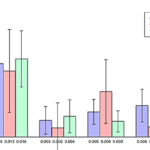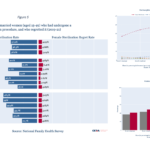Why Gender Quotas in Politics Matter: The Role of Female Voters
According to the Inter Parliamentary Union 2021 report on Women in Politics, women occupy only 25.5% seats in national parliaments or the highest governing bodies at the national level. Their dismal numerical representation in the political sphere not only cripples the goal of achieving gender equality but also undermines women’s substantive representation. To improve their representation, several countries have now put in place affirmative action, in the form of quotas, for women in political positions. India, for instance, has quotas for women in village council or Gram Panchayat (GP) elections.[1] Several studies across many countries, especially India, show that female quotas in political positions result in higher provisioning of public goods that women value more, such as water supply, sanitation etc. These studies are motivated by the observation that preference for public goods is gendered, and therefore, the political representation of women should change policy, as elected women would prioritize a different set of public goods than men.
However, insights from theories of political economy tell us that policy may be affected both by the preferences of the elected leaders as well as that of the voters. Communication of preferences by voters is also important in shaping policy. Specifically, female voters may express the demand for their preferred policy more strongly in the presence of female leadership, which can also influence policy choice. This could happen because registering demand to elected authorities is a costly process, especially for women, who face a significantly higher cost of political participation. Consequently, women may feel that female leaders are more likely to pay attention to their demands and therefore, may systematically choose to publicly express their demands more vigorously in their presence. In our recent paper, Chaturvedi, Das and Mahajan (2021), we examine why gender quotas in local elections in India might affect public good provision. In particular, we test whether the effect of gender quotas on policy occurs due to female leaders prioritizing different policies, which we call the supply mechanism, or female voters expressing their demands more vigorously in the presence of a female leader, i.e., demand.
Understanding the source of the effect has important policy implications. If demand matters, then policies that empower female voters and facilitate their political participation can also contribute towards making policies more sensitive to female preferences. It would also imply that gender quotas might be more effective in the presence of more engaged female voters. Therefore, policies aimed at female voters can be complementary to existing female quota policies.
To disentangle the two mechanisms, we focus on the provision of household toilets and compile novel administrative data on the household level allocation of toilets for the entire rural population of Uttar Pradesh comprising over 25 million households. We use household toilets as our target public good due to a combination of factors. First, it is well known that women have a greater preference for toilets than men. Hence, we expect the gender quota to affect their allocation. Second, open defecation is widely practiced in rural India due to a severe deficiency of sanitation facilities. Consequently, the construction of toilets has recently received a lot of emphasis from the policymakers, making it a politically salient public good. Finally, granular data on toilet provision allows us to identify the demand and supply mechanism separately.
We examine the effect of female quotas in the 2015 elections for village council presidents (or Sarpanches) for the universe of 59,000 GPs in U.P. on the provision of household toilets under the Swachh Bharat Mission (SBM) in the subsequent year 2016–17. In 2014, the new government at the center launched the Swachh Bharat Mission (SBM) or “Clean India Mission”. Under the scheme, a subsidy of Rs. 12,000 was provided to each eligible household for toilet construction. The progress on the scheme was monitored via a central MIS, which tracked toilet construction at the level of individual households. We accessed this publicly available data to estimate the impact of gender quotas. At least a third of Sarpanch positions are reserved for women based on the population composition of the GPs (i.e., population share or the total population of various caste groups). The algorithm of assigning quotas allows us to compare GPs that narrowly received gender quota for the Sarpanch position to those that narrowly missed it (using a method called regression discontinuity design). This gives us the causal impact of gender quota.
Importantly, we estimate the impact among Hindu and Muslim Sarpanches separately. We do this because existing studies point out that the gender gap in the preference for toilets is significantly higher among Muslims than Hindus. This is due to religious considerations of purity and pollution that Hindus associate against in-home toilets (Coffey et al., 2014, 2017). Such concerns are absent among Muslims, leading to a greater gender gap in preference for household toilets. We also establish this using survey data from rural North India (including U.P.) that collected information about household ownership, individual usage, and preference for toilets.
Consistent with the above observation, we find that among Hindu Sarpanches, gender quota does not affect toilet construction. On the other hand, female quota among Muslim Sarpanches leads to the probability of allocation more than doubling (Figure 1). We, therefore, document significant heterogeneity in the effect of female quota on toilet provision across villages in U.P. The greater effect in GPs with Muslim Sarpanches could either result from a larger gender gap in preferences among Muslim Sarpanches (i.e., due to supply) or a greater demand from women in the Muslim households which are relatively numerous in GPs where Muslim leaders win.

To identify the demand channel, we focus on the gender of the household head. Using pan-India survey datasets we argue and show that women in female-headed households enjoy greater autonomy, bargaining power, and participation in the political processes. Therefore, female-headed households are more likely to express greater demand for toilets in the presence of female Sarpanches. This implies that if demand is important, then the gender quota effect, among either Hindu or Muslim Sarpanches is likely to be greater for households headed by women. We find that gender quota among Hindu and Muslim Sarpanches leads to a large increase in the probability of toilet allocation among Muslim female-headed households by almost 35 and 49 percentage points respectively. The Hindu female-headed households also experience a differential increase in the allocation probability. The effect is, however, smaller in magnitude. The fact that Hindu female leaders allocate disproportionately more toilets to Muslim female-headed households can only be explained by their response to the demand expressed by those households. It also rules out the possibility that the result is driven by female Sarpanches generally being more concerned about (or more sensitive to the preferences of) female-headed households. The result, therefore, establishes that the demand mechanism is important in shaping the impact of gender quotas.
We investigate the supply mechanism by focusing on GPs having a close election between a Hindu and a Muslim candidate in GPs with and without female reservation. Within this sample, the religion of the Sarpanch is, in effect, randomly assigned. Hence, the GPs with Hindu and Muslim Sarpanches in this sample will, on average, have the same demographic composition and voter preferences. Consequently, any differential gender quota effect in the GPs with Muslim Sarpanches (relative to Hindu ones) would be evidence of the supply mechanism. We, however, find no evidence of the differential effect implying that the supply mechanism does not drive the results in our context. We, therefore, conclude that the overall effect of gender quota and its heterogeneity across villages is explained exclusively by demand.
We, therefore, should seriously pursue policies that encourage women voters to participate in political processes as it can make the female quotas more effective as well as significantly improve women’s substantive representation.
References
Chattopadhyay, Raghabendra, & Duflo, Esther. 2004. Women as policy makers: Evidence from a randomized policy experiment in India. Econometrica, 72(5), 1409–1443.
Chaturvedi, Rochana, & Chaturvedi, Sugat. 2020. It’s All in the Name: A Character Based Approach To Infer Religion. arXiv preprint arXiv:2010.14479.
Coffey, Diane, Gupta, Aashish, Hathi, Payal, Khurana, Nidhi, Spears, Dean, Srivastav, Nikhil, & Vyas, Sangita. 2014. Revealed Preference for Open Defecation: Evidence from a New Survey in Rural North India. Economic & Political Weekly, 49(38), 43–55.
Coffey, Diane, Gupta, Aashish, Hathi, Payal, Spears, Dean, Srivastav, Nikhil, & Vyas, Sangita. 2017. Understanding Open Defecation in Rural India: Untouchability, Pollution, and Latrine Pits. Economic & Political Weekly, 52(1), 59–66.
[1] Whether quotas for women should be introduced in the Parliament and in the state assemblies has been an issue of fierce debate in the country in recent years.









